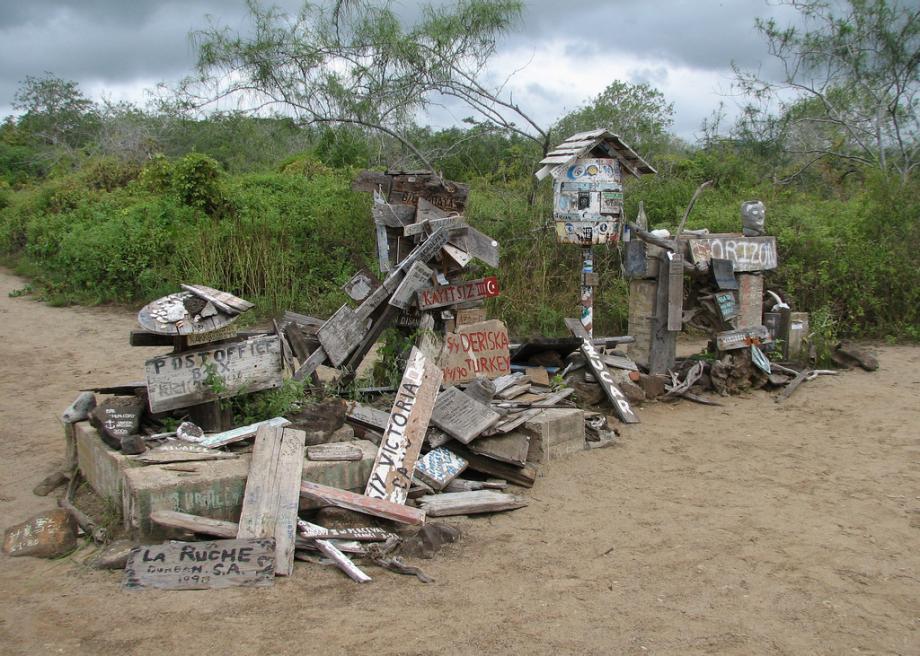Atlas Obscura on Slate is a blog about the world’s hidden wonders. Like us on Facebook and Tumblr, or follow us on Twitter.
Located on Floreana Island in the Galapagos, Post Office Bay has been acting as a sort of passive post station since the 1700s, using nothing but a barrel and the camaraderie of sailers and travelers.
The site was established by whalers in the 18th century. As whaling ships headed out from England and the United States to hunt the gentle giants of the sea, they would use the Galapagos Islands as a stop off to refill on food and water. They often feasted on endangered giant tortoises, eventually eliminating them from some of the islands. The hunting trips were long and the lonely sailors wished they had a way to send messages back home. So a barrel was placed on Floreana Island where whalers on their way out could put letters. The letters would then be picked up and delivered by sailors returning home from their trips. There was no postage fee, simply the trust that whoever grabbed your letter would get it to where it needed to go.
Surprisingly the mailbox and its honor system are still in use today. While the letters are no longer the missives of lonely sailors just trying to get messages to their loved ones any way they could, thousands of letters still pass through the barrel each year. Nowadays the postcards and letters are generally left and delivered by hopeful tourists, but many still seem to make it to their destination.
As described in an article in the Washington Post, groups of visitors (often tour groups or cruise patrons) will stop by the barrel and pull out the available mail, hollering out destinations to see if any of them are near enough to deliver. After the existing mail has been divvied up, people then leave notes and letters of their own for future visitors to take.
Today the site is surrounded by debris and driftwood, much of it covered in stickers and graffiti. Post Office Bay now resembles the fantasy of a remote island post spot more than it did when that was its true purpose.
If you liked this, you’ll probably enjoy Atlas Obscura’s new book, which collects more than 700 of the world’s strangest and most amazing places: Atlas Obscura: An Explorer’s Guide to the World’s Hidden Wonders.
